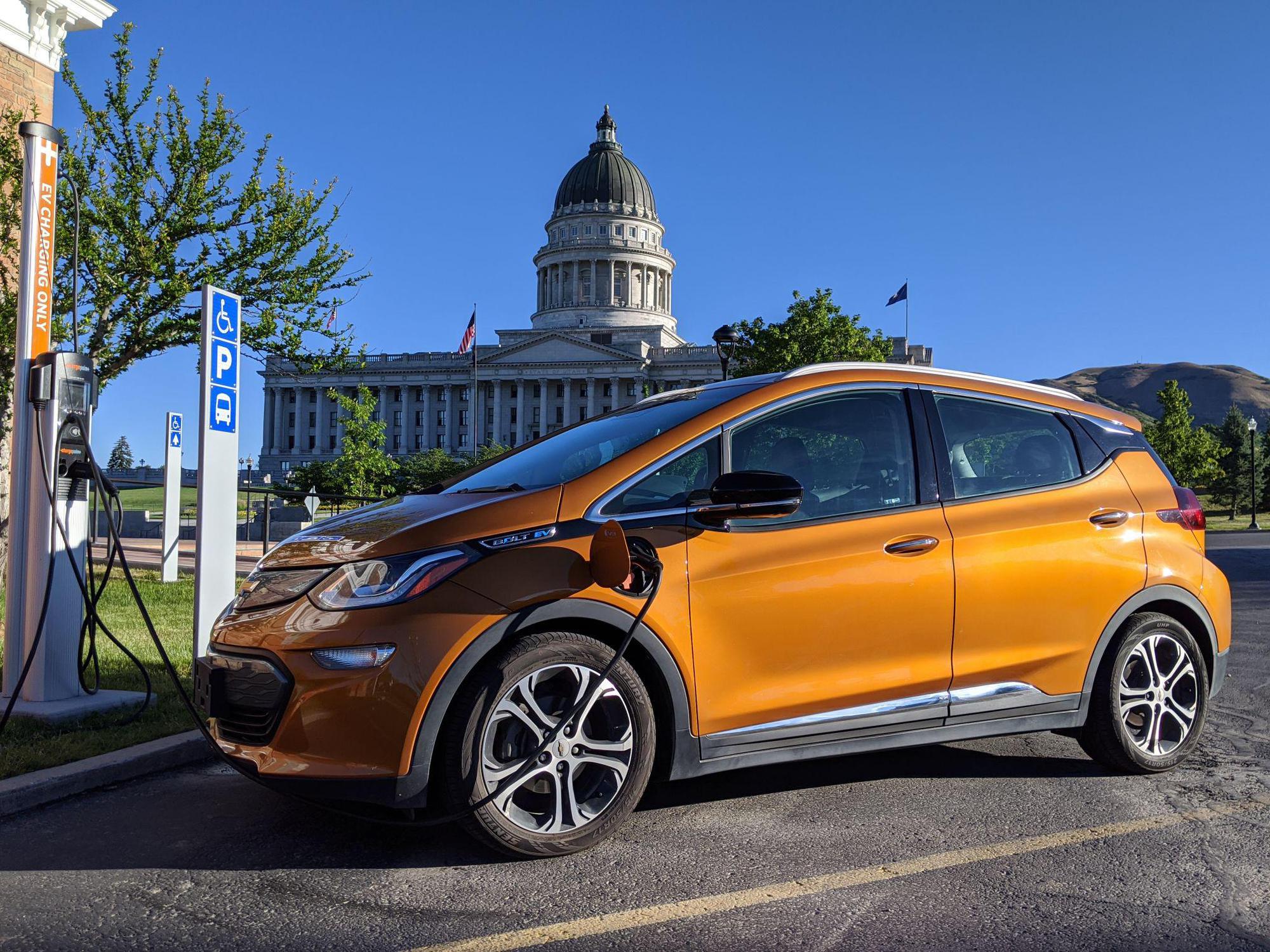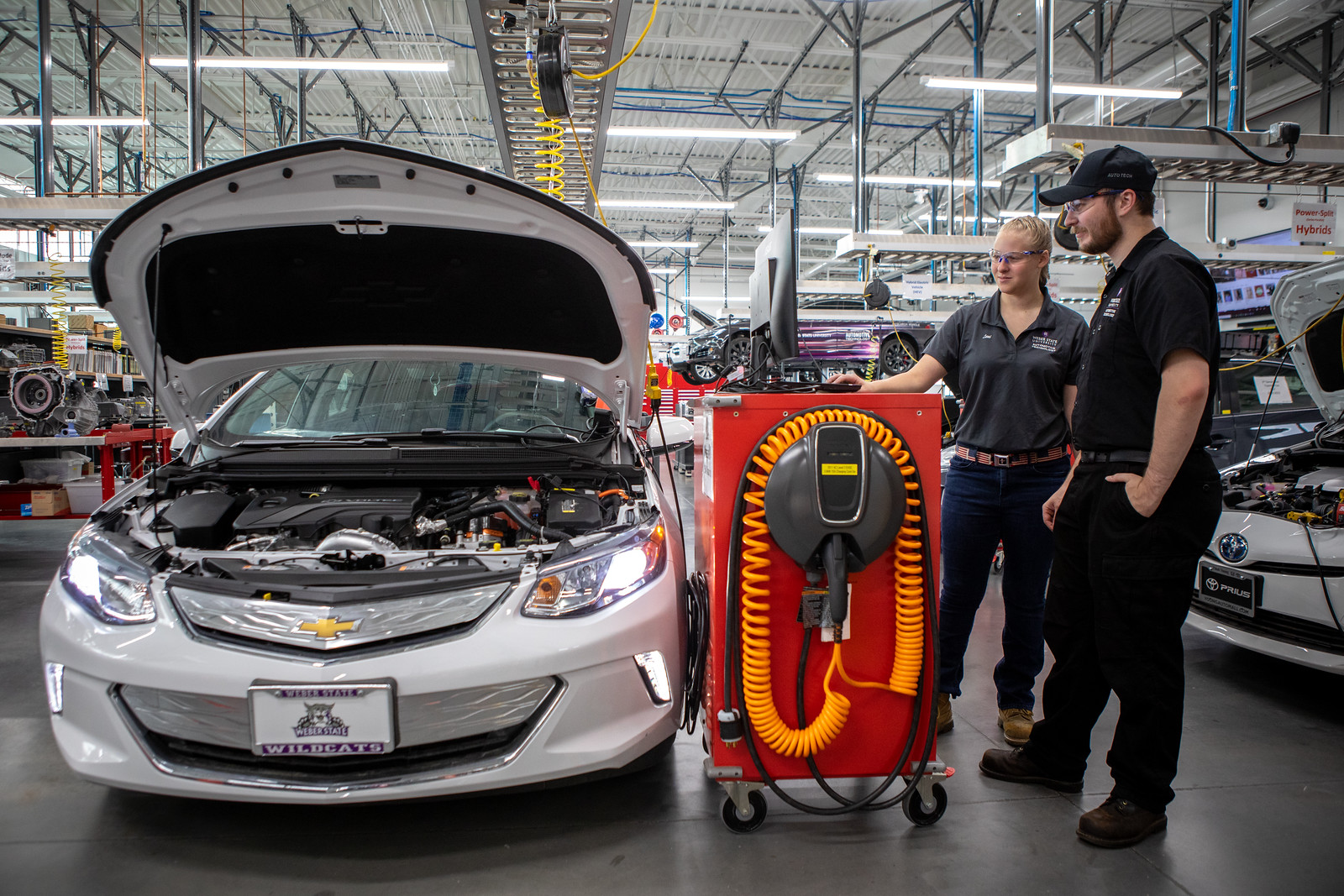State Fleet
Creating a Cleaner Fleet
The Utah Division of Fleet Opertions (DFO) continues to implement best practice, and best fit, solutions for state flee optimization. A few of the key milestones in the recent years is that all 243 State fueling sites now provide Tier 3 fuel, and the new DFO standard vehicle is the newest model year Toyota Pricus, Gen 3. However, that is just a few of the initiatives that Fleet has implemented to improve Utah air quality.
DFO believes the best impact for reducing tailpipe emissions is to place Alternative Technology Vehicles (ATVs) throughout State Fleet, especially in counties that are current in non-attainment with the the Environmental Protection Agency (EPA). Additionally, in October 2021, Governor Cox’s One Utah Roadmap requested that the state, “take meaningful, long-range action to combat poor air quality and climate change…” The plan outlines that the state accomplishes this through continuing to convert state fleets to zero and low-emission vehicles and utilizing Tier 3 fuels, and continue investing in electric vehicle charging stations.
Electric Vehicle Infrastructure
The State of Utah currently has 182 EV charging stations, with more planned to be
installed in FY2024. The number of electric vehicle charging sessions increased from 37,155 sessions in FY2022 to 54,126 sessions in FY2023. This is a 46% increase in utilization. The FY2023 sessions led to 1.4 million pounds in greenhouse gas (GHG) emission savings. This is equivalent of carbon being sequestered by 757 acres of US forests in one year.
Additionally, On September 14, 2022 the Biden Administration announced that Utah’s National Electric Vehicle Infrastructure (NEVI) deployment Plan was approved ahead of schedule. The Utah Department of Transportation (UDOT) has created a Utah NEVI website so the public can stay up to date on the progress of implementation of Utah’s NEVI plan. The plan is currently in Phase 1 and has now completed applications from interested parties for funding.

Tier 3 Fuels
Tier 3 gas is a cleaner-burning fuel that will reduce vehicle emissions without compromising your car's performance. It is safe for all vehicles and is typically unlabeled as Tier 3. Tier 3 standards apply to petroleum refiners who produce the fuel, reducing sulfur content and facilitating cleaner air. Tier 3 gas can reduce harmful emissions by up to 80 percent in newer vehicles and by up to 12 percent in older cars. Tier 3 fuels reduce sulfur content, enabling a car's catalytic converter to run more efficiently and reduce volatile organic compounds (VOCs) and nitrogen oxides (NOx) emissions.
Of the 986 vehicles that DFO has purchased since the 2017 model year, 974 (or 99%), have been Tier 3 vehicles. Of these 986 same vehicles that DFO has purchased since the 2017 model year, 526 (or 53%) of all new, people-transport vehicles have met the bin 2 requirements outlined in the Environmental Protection Agency’s 40 C.F.R. 86.1811-04(c)(6) regulation, Emission Standards for Light-duty Vehicles, Light-duty Trucks and Medium-duty Passenger Vehicles.

EV Auto Technician Training
Weber State University (WSU), with the help of multiple partners, including the Utah Division of Fleet Operation, is developing a should-be successful Electric Vehicle (EV) technician program, with a “train the trainer” model, curriculum, and proof of concept for working with disadvantaged communities and industry through the Workforce Expansion for Electric Vehicles (WeEV) Project. Solving the critical gap in the EV ecosystem produces stronger adoption of EVs. WeEV seeks to encourage the participation of underserved communities and underrepresented groups. WeEV includes individuals from groups historically underrepresented in STEM on their project team and as project participants.
Through WeEV, WSU plans to scale its EV technician program to include more students and expand to other campuses. Furthermore, it will provide the means to give training opportunities to students who come from underserved or disadvantaged backgrounds. This training pathway allows students to familiarize themselves with how EVs are maintained and repaired, which translates to preparedness for when they enter the workforce. WSU utilizes a “train the trainer” model that allows for the program to be easily replicated in new locations.
